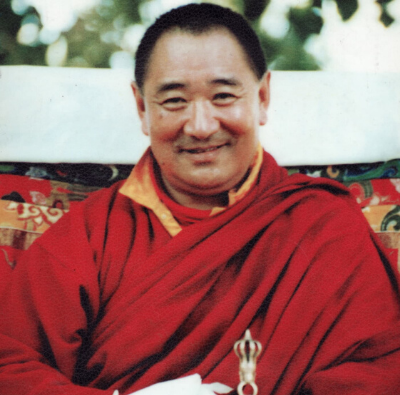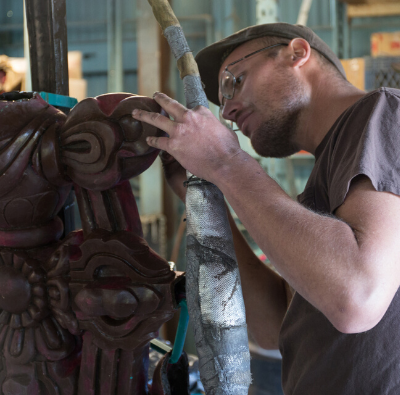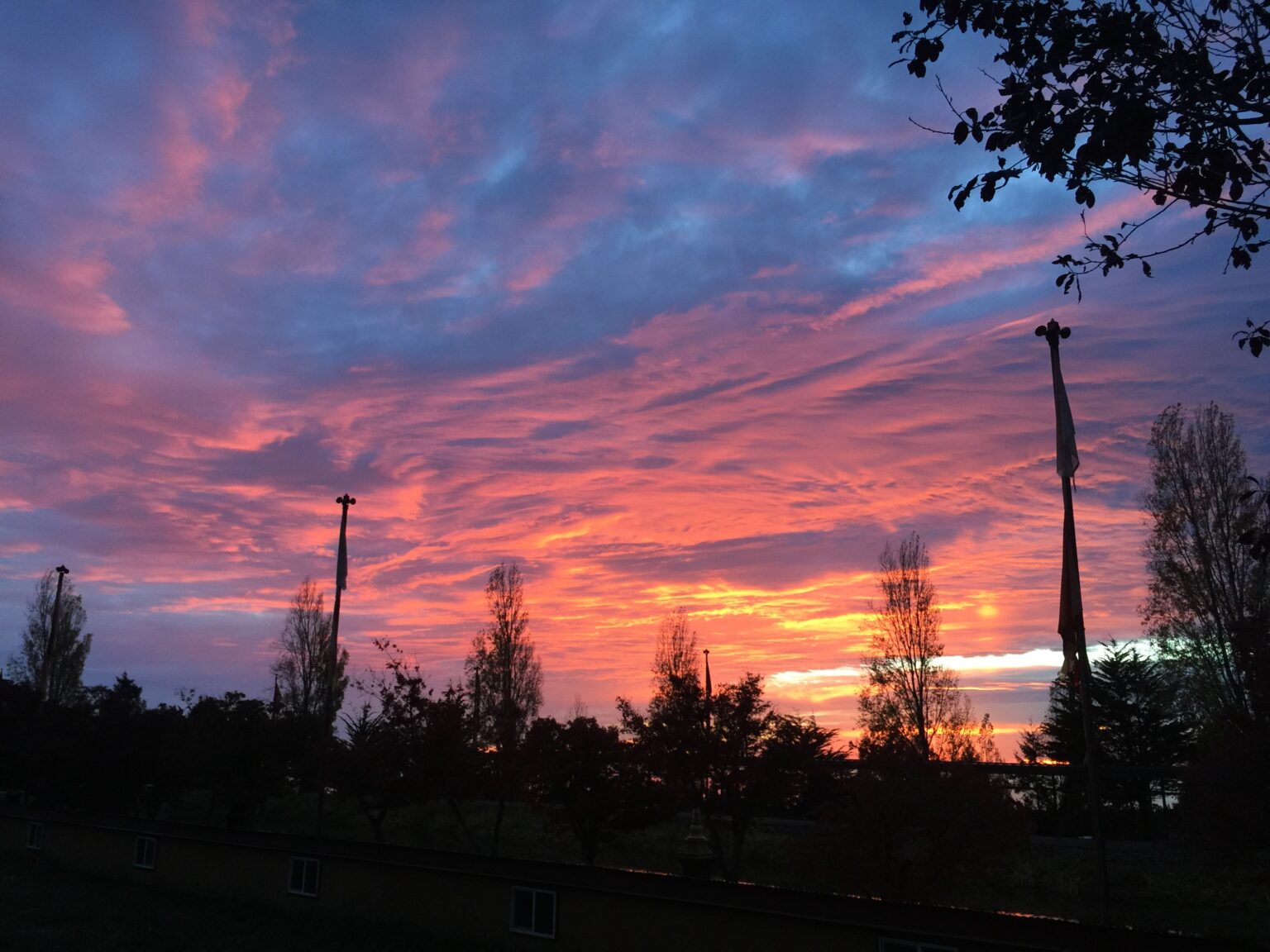About Us
The roots of the Nyingma Mandala in the West trace back to 1969, when Tarthang Tulku , a highly-trained lama in the Nyingma tradition of Tibetan Buddhism, arrived in Berkeley, California and established the Tibetan Nyingma Meditation Center (TNMC). TNMC is the spiritual center for all the activity that has followed in the decades since.
Founder

Tarthang Tulku
Tarthang Tulku, referred to by his students as Rinpoche, a traditional title of respect, was born in Golok, East Tibet in 1935. His first teachers were his parents and private tutors. At the age of nine, he went to live at Tarthang Monastery, where he received instruction in Mahayana view, meditation, and conduct. At the age of sixteen, he left Tarthang monastery to study with many of the greatest masters of the 20th century, including Jamyang Khyentse Chokyi Lodro, Zhechen Kongtrul, Zhechen Rabjam, Adzom Gyelsrey, and Bodpa Tulkuthirty-one teachers in all. Until the age of twenty-four, Rinpoche received intensive training in the shastra tradition and the three Inner Yogas of the Nyingma tradition.
In 1958, Rinpoche followed his root teacher, Jamyang Khyentse Chokyi Lodro, to Sikkim and India. Unable to return to Tibet due to the political turmoil there, he found himself in exile. The next several years were devoted to pilgrimage and retreat at holy places in India. In 1962, he was appointed to represent the Nyingma tradition at Sanskrit University in Varanasi. That same year, he set up one of the first Tibetan printing presses in exile and began his life’s work of preserving sacred texts and art. In 1968, he resolved to pursue his vision in the West and left for America.
Rinpoche chose Berkeley, California as his headquarters and established the Tibetan Nyingma Meditation Center there in 1969. One of the first learned Tibetan lamas to take up residence in the West, he quickly developed a vision of wisdom in action that would eventually lead to the founding of over twenty different organizations, making a significant impact on the transmission of Dharma to the West and the restoration of Dharma in Asia. After his first decade in America, he withdrew from public teaching to devote himself to his life’s work.
Today Rinpoche lives in retreat at Odiyan Country Center in northern California. He continues to guide the work of selecting, editing and printing sacred texts and creating offerings of sacred art and symbols to the Dharma. He provides ongoing spiritual direction to the Nyingma community and its member organizations.
Rinpoche came to the United States because he saw it as a land of opportunity, where he could preserve and transmit the teachings that his highly accomplished teachers had passed on to him. He has focused on preserving sacred texts, writing works for a Western audience, and creating communities built around Buddhist principles. His family and students have taken on the awesome responsibility of sharing his vision with others and creating a vibrant and enduring home for the Dharma in the West.
About Our
History
The roots of the Nyingma Mandala in the West trace back to 1969, when Tarthang Tulku , a highly-trained lama in the Nyingma tradition of Tibetan Buddhism, arrived in Berkeley, California and established the Tibetan Nyingma Meditation Center (TNMC).
Padma Ling, established in an old fraternity house in 1971, became its permanent home. TNMC is the spiritual center for all the activity that has followed in the decades since.
Within a few years of his arrival in America, Tarthang Tulku (usually referred to as Rinpoche, a title of respect) founded several organizations that would provide the basic structure for his activities in the United States.
We refer to this structure as the Nyingma Mandala.
A mandala is a sacred form that depicts in symbolic form individual aspects or qualities surrounding a unifying center. It can be used in visualization, as an organizing principle, and as a structure for accomplishment in the material world. The mandala structure embodies unity, balance, and wholeness in all dimensions of being.
Relying on the mandala structure, the organizations of the Nyingma Mandala support and balance each other, united by the central vision and teachings of the Head Lama of TNMC. The Nyingma Association of Mandala Organizations (NAMO) coordinates and supports the mandala organizations.
After TNMC, the first four organizations founded to carry out the work of the Nyingma community were Dharma Publishing, the Tibetan Aid Project, the Nyingma Institute, and Nyingma Centers. All four were legally established between 1972 and 1976. The Odiyan Country Center, a part of TNMC, was established in 1975.
Since that time, the mandala of organizations has expanded dramatically.
In the United States, Odiyan, the Yeshe De Text Preservation Project, Ratna Ling Retreat Center, and Dharma Publishing and Press are located in Sonoma County, California. Berkeley, California, where the Nyingma mandala had its beginnings, is home to the Nyingma Institute, Dharma College, Mangalam Research Center and Mangalam Center, Nyingma Trust, the Center for Creative Inquiry, and Guna Foundation. In residence at Odiyan, the Head Lama also oversees Dharma projects in India, the Himalayas, and the Tibetan region.
From its headquarters at Odiyan, Nyingma Centers International oversees the blossoming mandala vision worldwide, manifest through our international organizations in Brazil, Germany, and the Netherlands and study groups in other lands. Each international center has its own mandala of activities, representing the four directions of the mandala: publishing in the East, support for Tibetans and the Buddhist heritage in the south, art and sacred forms in the west, and an educational institute in the north. Also a part of the mandala, though operating independent of NAMO, are the Sarnath Institute in India and the four Light Foundations, working throughout much of Asia to restore and preserve the Dharma in its homeland.
Vision
For 1,400 years, Tibet was a society whose people practiced the Buddhist tradition as a living truth, woven into every part of their lives.
Tibetans were introduced to Buddhism as early as the 7th century CE, when King Srongsten Gampo sent his trusted minister, Thonmi Sambhota, to India to learn Sanskrit and devise a writing system for Tibet, so that translation of Buddhist texts could begin. In the eighth century, King Trisong Detsen dispatched a host of young Tibetan translators to India, birthplace of Buddhism. They returned to Tibet with more than a thousand texts. These works formed the basis for establishing the Dharma on a secure footing. Building on this foundation, the people of Tibet established their own unique Dharma tradition, rich in study, practice, and realization.
The written tradition safeguarded in Tibet holds a wider range of Buddhist texts than any other Buddhist culture. If these texts were to disappear, the damage to Buddhism worldwide would be incalculable.
Beginning in 1959, Tibet experienced invasion, followed by widespread suffering and the destruction of its culture on a vast scale. By the 1960s, the number of active monasteries in Tibet went from over 6,000 to fewer than 10.
Over 80,000 Tibetans went into exile in the first years of occupation. Within a few years that number would climb to over 100,000. Today, there are more than 140,000 Tibetans living in exile worldwide.
Tibet’s ancient Buddhist traditions were nearly lost forever during those turbulent decades. Its treasuries of sacred books and art were nearly destroyed, and most of its great teachers passed away, were imprisoned, or were forced into exile. A small number of lamas were able to escape with their most precious texts; these volumes became the basis for the decades-long preservation efforts of Tarthang Tulku and others.
Now the bearers of Tibet’s ancient Buddhist traditions stand upon a precipice. The last generation to have been fully educated within Tibet before 1959 has almost disappeared, leaving a scant handful of leaders and teachers to ensure, along with their students and Dharma heirs, that Tibetan Buddhist knowledge continues into the future, not as a museum piece or historical curiosity, but as a vital, living tradition with an essential role to play in the modern world.
Sometimes a handful of people have the power to change the course of an entire civilization. This happened in Tibet in the eighth century. Let us hope that it can happen again today.



Active Dimension
The work we do in the Nyingma community offers us a way to make our lives into a path of realization.
Working for the benefit of others and for goals that go beyond personal concerns, we have the chance to deepen our knowledge. Practicing patience, endurance, and willingness, we are also learning directly in our own experience how the mind operates.
In our community, we engage a wide variety of work, learning both physical and managerial skills and creating sacred objects of beauty and spiritual significance. But it is our community’s unique way of working that brings the most important benefits. Our path of action is based on developing concentration, awareness, and positive energy. This creates a stable foundation and helps us remain in close touch with what we are doing day to day, while also getting good—sometimes remarkable—results. It makes it easier to learn new skills and to develop our existing skills toward real mastery; it supports effective communication with our fellow workers; and it allows us to learn more about ourselves every day. As we pursue this way of working, we move toward inner stability that helps us meet challenges, and we stimulate a broader and deeper intelligence that can make more responsible decisions.
Most Westerners think of the Buddhist path as centering on meditation, but Buddhist communities through history have cultivated other approaches to realization. Dedicated action, as expressed in the six paramitas, is also essential. In our community, we act to educate, to preserve, and to promote knowledge. We do this through cultivating skillful means for achieving peace, balance and well-being, and also by activating through our study and practice the transcendent wisdom that goes beyond ordinary mind.
Doing and acting—so central to our community—are natural to human beings. The feet are for walking, the hands are for taking hold; the senses let us obtain necessary knowledge and direct our responses; and the mind provides creativity. Our practice turns this natural activity toward the Dharma and the benefit of all beings, making it the foundation for the path we follow.
Integrating work into our spiritual path and way of life ensures that we will ground our practice at the immediate physical and practical level. Whether we are producing books that contain the teachings of the Buddha, creating statues and sacred images, constructing the mandala, gardening, or dealing with issues of administration, we are active in the world; we are doing. Year by year, we are perfecting our capacities. As we become more creative and competent, we are also studying the operations of mind. Gradually we are finding ways to act that evoke the power of realization.
Through Tarthang Rinpoche’s teachings, new ways of communicating the dynamic, creative wisdom of the Tibetan tradition have found expression. We see this in countless ways. The books we publish in Western languages benefit people from all walks of life. Our teaching centers help students find inner peace and discover the freedom and knowledge available within experience. In our projects, we learn to exercise our vision and creativity while drawing on a profound heritage of art, culture, and history. Starting with few skills, little knowledge, and limited resources, we have brought something into being that goes beyond the limited horizons of self-concern. Despite our own limitations, we have produced results that may benefit others for a long time to come.

50 Years of TNMC
Please enjoy this presentation given by Jack Petranker about the Nyingma Mandala!
